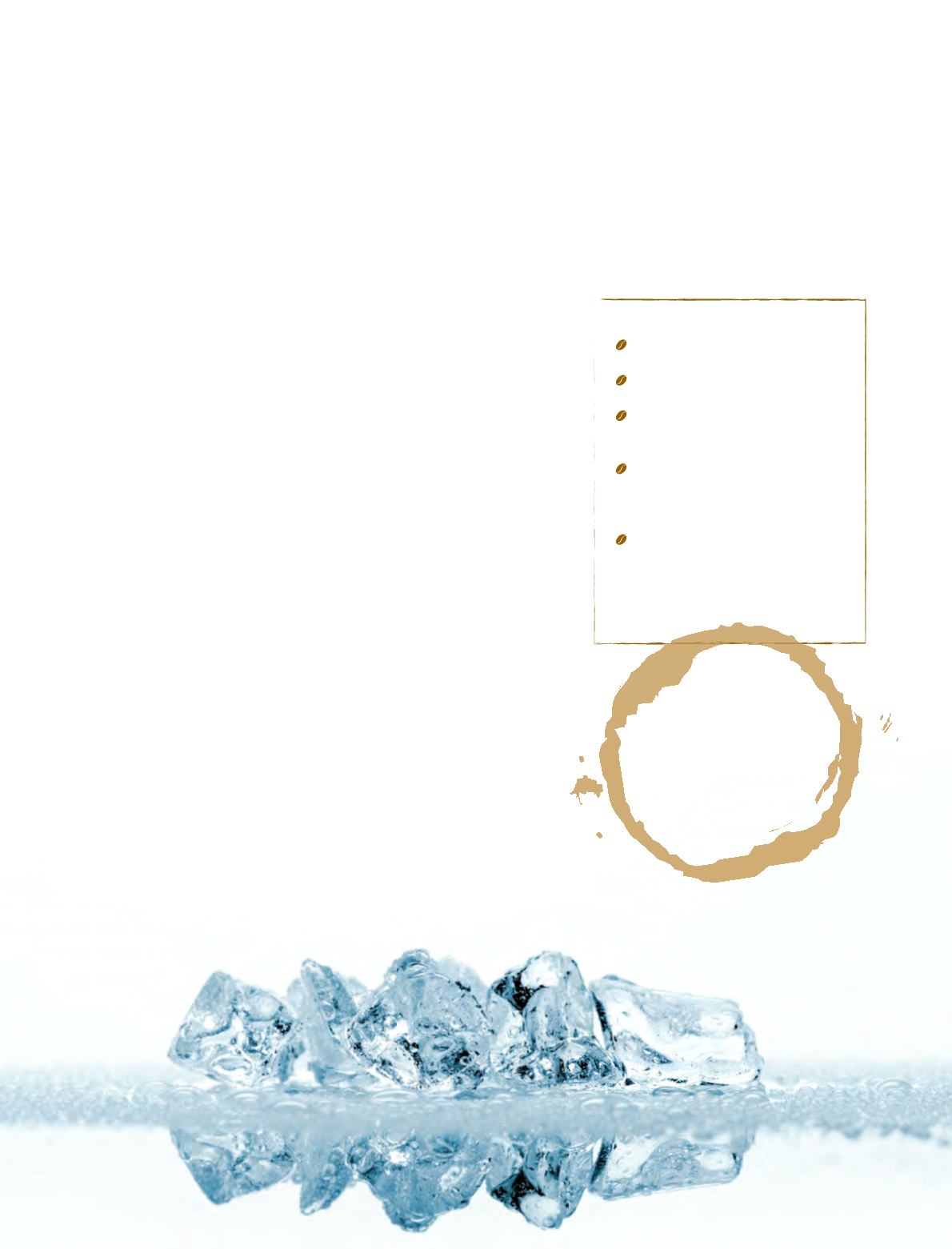

COFFEE
209
July14
Trend Alert: Cold Brew
What’s behind the brouhaha? Let us explain.
Sure, you’re familiar with iced coffee – coffee brewed hot and served cold,
usually over ice – but cold brewed coffee is a different beast altogether.
Here, ground coffee is slowly steeped in room temperature or cold water
to produce a sweeter, less acidic cup of joe. And by replacing heat with
time, you’re rewarded with loads of flavour without any of the bitterness.
Why is it so popular now? After all, cold brews are anything but new. The
drink took root in Japan after being introduced by Dutch traders in the early
1600s, so we figured: who better to speak with than the coffee gurus over
at
Dutch Colony Coffee Co.
? Here is what we learned.
The guys behind
Dutch Colony Coffee Co.
tweaked over 100 cups
of coffee before agreeing
on the cold brew that
they serve today. The
winner? A coarse blend
of chocolaty Guatemalan
and fruity Ethiopian
beans steeped for
12 hours.
Dutch Colony Coffee Co.
#02-K67 PasarBella @ The Grandstand
200 Turf Club Road | 6467 0255
THE COLD, HARD FACTS:
Cold brew is also sometimes called
“Kyoto coffee” or “Dutch coffee”.
Steeping can be done in as little as
12 hours, or upwards of 30 hours.
Cold brews cost more than iced
coffees; it takes longer and uses
more beans per cup.
The use of cold water extracts
different chemical compounds
within the bean structure, imparting
more depth to the coffee.
Ounce for ounce, cold brew has
more caffeine than any other coffee,
due to the slow extraction process.
Beware – it’s smooth but potent
stuff.
Generally speaking, there are two ways to make a cold brew:
1) Soaking Method
(aka the no-frills way)
You’ll need:
•
1/3 cup coarsely ground coffee
•
1 1/2 cups room temperature or cold water, a strainer, a bowl, a paper
coffee filter and a pitcher;
or
a French press*
1. Place coffee grounds in the pitcher, add the water and stir to combine.
Cover tightly and let steep at room temperature for 12 to 24 hours.
2. Line a fine-mesh strainer with a coffee filter.
Slowly
and patiently pour
the coffee through the strainer into a bowl. Once only grounds are left
in the pitcher, discard all grounds.
4. Rinse the pitcher, and pour the strained coffee back into it. Cover and
refrigerate.
5. The coffee produced is a concentrate, so you can drink it straight or
dilute it with water, milk or flavourings like sugar, vanilla or booze. Serve
slightly chilled or over ice.
* A French press streamlines the process – simply plunge after steeping.
2) Drip Method
(aka the
moo-hah-hah-hah
mad-scientist way)
Using the same proportions of coffee and water as above, replace the kitchen
items with an ultra-impressive chemistry-lab-style Japanese coffee drip that
extracts coffee one drop at a time. If you’re short on cash (a few thousand,
for starters) or space at home, you can sample a drip-method cold brew at
Dutch Colony Coffee Co. ($6), or take one home at the same price in one of
their new takeaway bottles. Otherwise, you can purchase a less expensive,
but much smaller, Hario drip from them ($359).



















